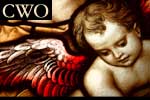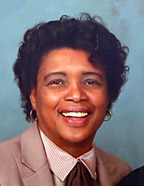



After a sumptuous breakfast at our hotel, we boarded our bus and our first visit was to Yad Vashem, Israel’s memorial museum to the six million Jews who perished in the Nazi holocaust that begun in 1933. This place is an impressive collection of thousands of artifacts that relate to the times the Jews sojourned in Europe, for example, photographs, carrying cases and a host of memorabilia, also an eternal flame burning in memory of those who perished.
In memory of the tragedy of the holocaust, the museum has been given a name biblically which is Yad Vashem, derived from Isaiah 56:5.
In a trip to Israel, Yad Vashem is a distinctive place to visit. However, though some people, including myself were enthused with all the information given, yet for others it was too painful to withstand, and they walked away.
Yad Vashem is a sure testimony of Israel never to forget the Nazi holocaust and to pass that information to their future generations, just as they have done with the account of their journey from Egypt to the Promised Land in Old Testament times.
Then on we went to the Israel Museum in which there is a vast collection of arts, archaelogy and ancient scrolls and fragments of other writings. The museum has dedicated an entire wing called the Shrine of the Book to the housing of the Dead Sea scrolls found at Qumran in 1947 by a young Bedouin shepherd. To witness those ancient treasures somehow gave me the feeling of being present when they were created.
At the Israel Museum there is an outdoor scale model of the city of Jerusalem, showing houses, buildings and the Temple of Jerusalem as far back as AD 66. These models provide an accurate view of how Jerusalem looked in those times. Our tour guide mentioned that should there be any bit of new information coming in, the model is adjusted, but so far it is up to date and accurate with all information and traditions received. This work of art and skill is truly something to be seen.
I stand amazed to see how much Israel has accomplished in the mere 63 years the country has become a state. When I consider the Judean desert with its flourishing greenery in parts of it, aided by its intricate irrigation system and a museum filled with historical writings, massive excavations and the rebuilding of ancient structures, I have to agree with the Bible that Israel is truly blessed of the Almighty.
Then off we went to the Church of the Nativity (the place where tradition tells us that Jesus was born). However, before going there, our guide took us to a pastoral setting where there are caves, and we were told it was most likely such a place that Jesus was born. This was done so that we would get an idea of what the nativity cave looked like in those days.
The Church of the Nativity is a 6th century building which is said to be built over a cave.
This is a huge building, part of which is the church and part is a souvenir shop, selling holy oils, candles, religious pictures, olive wood carvings, etc. and to enter the part that is the church, pilgrims have to stoop low to walk through a doorway only 1.2 meters high that is cut in a stone wall. And as ususal, there was a noisy crowd of people, with flashing cameras and a lot of pushing and shoving to enter the church through the low doorway.
As one enters the church through the low doorway there is a grotto (cave) with a large silver star on its marble floor, marking the spot where Jesus is said to have been born. On the floor of the grotto there are the words “Hic de virgine Maria Jesus Christus natus est” meaning in Latin, “Here Jesus Christ was born to the Virgin Mary.”
As pilgrims entered the church, many could be seen, stooping low to kiss the star that marks the spot where Jesus was said to be born. In my mind’s eye, I imagined the cave as I had seen it at the previous pastoral setting and mentally placed it at that spot.
And as usual, with any Roman Catholic or Greek Orthodox church, the décor at the Church of the Nativity is very ornate, with beautiful hanging lamps, lighted candles and biblical pictures which all serve their purpose in creating a religious atmosphere. All this made me think “this would be a beautiful place to sit and meditate on the birth and life of Christ…if only there was time and opportunity to be quiet…” It would have been so much more meaningful and satisfying.
At the hotel, we ended the day with a great dinner and a wonderful teaching by Pastor Peter Youngren
In memory of the tragedy of the holocaust, the museum has been given a name biblically which is Yad Vashem, derived from Isaiah 56:5.
In a trip to Israel, Yad Vashem is a distinctive place to visit. However, though some people, including myself were enthused with all the information given, yet for others it was too painful to withstand, and they walked away.
Yad Vashem is a sure testimony of Israel never to forget the Nazi holocaust and to pass that information to their future generations, just as they have done with the account of their journey from Egypt to the Promised Land in Old Testament times.
Then on we went to the Israel Museum in which there is a vast collection of arts, archaelogy and ancient scrolls and fragments of other writings. The museum has dedicated an entire wing called the Shrine of the Book to the housing of the Dead Sea scrolls found at Qumran in 1947 by a young Bedouin shepherd. To witness those ancient treasures somehow gave me the feeling of being present when they were created.
At the Israel Museum there is an outdoor scale model of the city of Jerusalem, showing houses, buildings and the Temple of Jerusalem as far back as AD 66. These models provide an accurate view of how Jerusalem looked in those times. Our tour guide mentioned that should there be any bit of new information coming in, the model is adjusted, but so far it is up to date and accurate with all information and traditions received. This work of art and skill is truly something to be seen.
I stand amazed to see how much Israel has accomplished in the mere 63 years the country has become a state. When I consider the Judean desert with its flourishing greenery in parts of it, aided by its intricate irrigation system and a museum filled with historical writings, massive excavations and the rebuilding of ancient structures, I have to agree with the Bible that Israel is truly blessed of the Almighty.
Then off we went to the Church of the Nativity (the place where tradition tells us that Jesus was born). However, before going there, our guide took us to a pastoral setting where there are caves, and we were told it was most likely such a place that Jesus was born. This was done so that we would get an idea of what the nativity cave looked like in those days.
The Church of the Nativity is a 6th century building which is said to be built over a cave.
This is a huge building, part of which is the church and part is a souvenir shop, selling holy oils, candles, religious pictures, olive wood carvings, etc. and to enter the part that is the church, pilgrims have to stoop low to walk through a doorway only 1.2 meters high that is cut in a stone wall. And as ususal, there was a noisy crowd of people, with flashing cameras and a lot of pushing and shoving to enter the church through the low doorway.
As one enters the church through the low doorway there is a grotto (cave) with a large silver star on its marble floor, marking the spot where Jesus is said to have been born. On the floor of the grotto there are the words “Hic de virgine Maria Jesus Christus natus est” meaning in Latin, “Here Jesus Christ was born to the Virgin Mary.”
As pilgrims entered the church, many could be seen, stooping low to kiss the star that marks the spot where Jesus was said to be born. In my mind’s eye, I imagined the cave as I had seen it at the previous pastoral setting and mentally placed it at that spot.
And as usual, with any Roman Catholic or Greek Orthodox church, the décor at the Church of the Nativity is very ornate, with beautiful hanging lamps, lighted candles and biblical pictures which all serve their purpose in creating a religious atmosphere. All this made me think “this would be a beautiful place to sit and meditate on the birth and life of Christ…if only there was time and opportunity to be quiet…” It would have been so much more meaningful and satisfying.
At the hotel, we ended the day with a great dinner and a wonderful teaching by Pastor Peter Youngren











